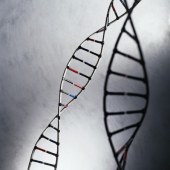
THURSDAY, Sept. 13 (HealthDay News) — Researchers have identified the genetic “blueprint” for how a heart becomes a heart — a sort of instruction manual for building a fully functioning heart from embryonic stem cells.
The scientists reprogrammed embryonic stem cells from mice into beating heart cells. Then they removed and analyzed DNA from developing and mature heart cells to determine which aspects of heart formation they encoded, using large amounts of computing tools and gene-sequencing data to do so.
The findings provide clues into the genetic basis for some forms of congenital heart disease, say the Gladstone Institutes scientists, and could lead to new treatments for life-threatening birth defects such as arrhythmias — irregular heart beat — and ventricular septal defects, or “holes” in the heart.
“Congenital heart defects are the most common type of birth defects — affecting more than 35,000 newborn babies in the United States each year,” Benoit Bruneau, associate director of cardiovascular research at Gladstone, said in an institute news release. “But how these defects develop at the genetic level has been difficult to pinpoint because research has focused on a small set of genes. Here, we approach heart formation with a wide-angle lens by looking at the entirety of the genetic material that gives heart cells their unique identity.”
“Our findings reveal new clues as to how complex genetic and epigenetic patterns are precisely regulated during heart formation,” study collaborator Laurie Boyer, from the Massachusetts Institute of Technology, said in the news release. “In particular, our identification of key segments of the genome that contribute to this process will hopefully allow us to identify the genetic causes of many forms of congenital heart disease — an important first step in the fight against this devastating disease.”
The researchers found that groups of genes work together in heart cells, switching on and off simultaneously at certain times during development. They also identified new genes involved in heart formation and figured out how they interact with previously known genes.
“Next, we hope to examine the DNA of patients living with congenital heart disease, in the hopes that we can pinpoint the specific genetic disruption that caused their heart defect,” said Bruneau, who is also a professor of pediatrics at the University of California, San Francisco. “Once we identify that disruption, we can begin exploring ways to restore normal gene function during early heart formation and reduce the number of babies born with debilitating, and sometimes fatal, congenital heart defects.”
The study was published online Sept. 13 in the journal Cell.
More information
Visit the U.S. National Institutes of Health to learn more about congenital heart disease.

